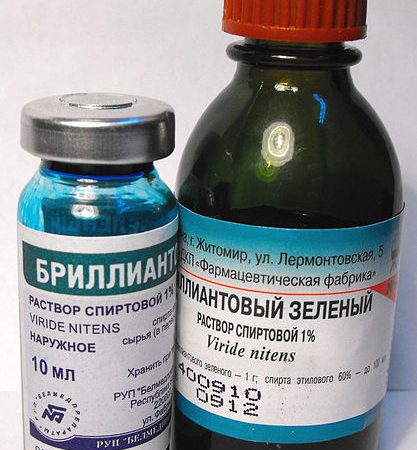
Russian opposition leader Alexei Navalny. Source: Navalny.com
“Zelyonka,” a green topical antiseptic used in Russia and other countries in Eastern Europe, is back in the headlines: On March 19, Russian opposition leader and presidential candidate Alexei Navalny was attacked with the antiseptic outside his campaign headquarters in the Siberian city of Barnaul, leaving his face coated in “brilliant green.”
Navalny has used the incident to rally his base to join a nationwide anti-corruption march scheduled for Sunday, and his supporters have begun painting their faces green in solidarity—brilliant green, indeed, is becoming the unofficial color of Russia’s opposition movement.
But Monday wasn’t the first time zelyonka, a diminutive term for “green,” has made its way onto the front pages: over the past several years, the antiseptic has taken on an increasing significance in Eastern European politics.

Brilliant Green. Source: Wikimedia Commons, CC 1.0
First discovered in the 19th century by English chemist William Perkin, zelyonka is still commonly used in many parts of the former Soviet Union, and you’ll find a vial of it in nearly every Russian home—it’s the antiseptic parents put on their children’s scrapes and cuts.
But lately, it’s become a weapon for those who want to attack the Russian opposition. It doesn’t hurt. It doesn’t threaten one’s health. It does burn a bit, but most importantly, it doesn’t rub off easily. When used against the opposition, it's intended to be a symbolic marker that takes days to disappear.
And there have been dozens of instances of zelyonka being used to mark opposition leaders over the last several years. Most recently, Mikhail Kasyanov, a Russian statesman and politician who served as prime minister of Russia from May 2000 to February 2004, was doused in green dye at a march in memory of slain opposition leader Boris Nemtsov in February 2017.
Михаилу Касьянову неизвестный плеснул в лицо зеленку pic.twitter.com/655NpWo1Yz
— Ольга Кузнецова (@olyakuznetsova) February 26, 2017
An unidentified person splashed zelyonka on Mikhail Kasyanov.

Russian novelist Lyudmila Ulitskaya. Source: Wikimedia Commons, CC ASA 3.0
Similarly, Lyudmila Ulitskaya, an internationally acclaimed writer and fierce opponent of the Soviet Union and Vladimir Putin’s regime, fell victim to an antiseptic attack in 2016. Activists from the National Liberation Movement (NOD), a nationalist, ultraconservative group, doused her in zelyonka while she was trying to enter an award ceremony for a school competition being held by the Memorial Society, an organization that seeks to document crimes committed during the Soviet era and to prevent their reoccurrence in modern Russia.
Maria Alyokhina and Nadezhda Tolokonnikova, members of the anti-Putin feminist punk band Pussy Riot, have also been attacked: in 2014, a group of pro-Putin activists sprayed the two with zelyonka.
In Ukraine, Zzlyonka is also a popular political weapon. Former Prime Minister Arseniy Yatsenyuk and current National Security and Defense Council Secretary Oleksandr Turchynov were doused with green dye in the eastern city of Kharkiv 2014, and a variety of other Ukrainian politicians, activists, and journalists have been victims of attacks since.
Zelyonka attacks have become so routine in Russia and Ukraine that opposition leaders no longer see them as much of a threat. In fact, they’re beginning to use the attacks as their own political weapon: green is quickly becoming the color of the opposition. After the latest attack on Navalny, social media users launched an online flashmob using the hashtag #GreenNavalny (#зеленыйНавальный) during which people posted pictures of themselves covered in green face paint. Indeed, Russia’s opposition seems to be using antiseptic attacks on its leaders as a way to mobilize support against the leaders of their country.







